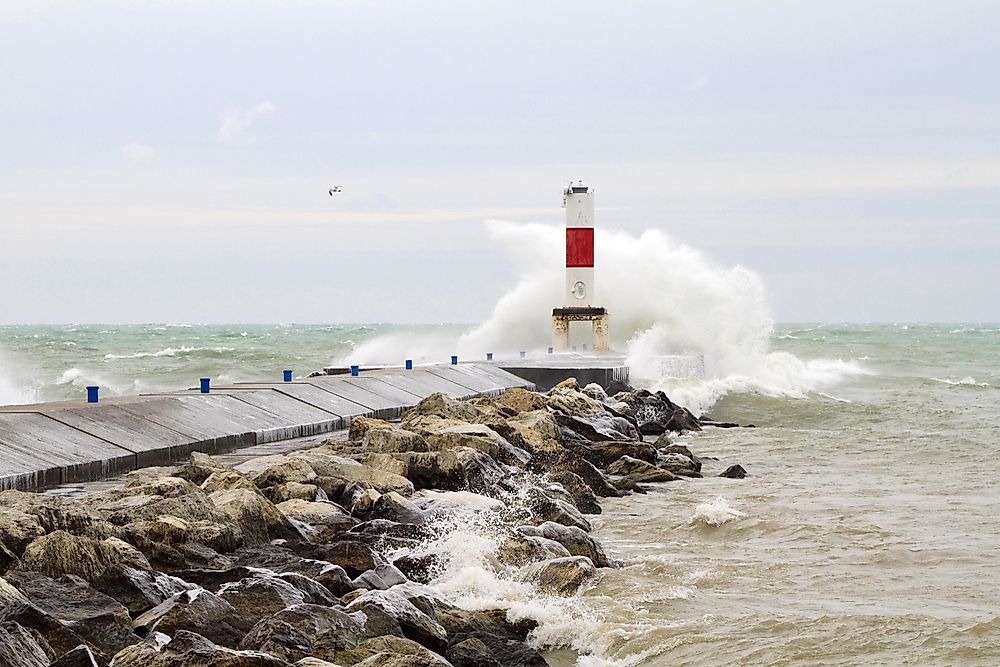What Is A Lake Tsunami?

Tsunamis occurring in lakes is a pretty rare phenomenon. A lake tsunami can be described as a series of water waves caused by the sudden displacement of large volumes of a body of water. In the last century, only about 10 major lake tsunamis have occurred in the world. Lake tsunamis travel at jet speeds in deep waters but slow down in shallow waters where it builds in height.
Causes of Lake Tsunamis
Lake tsunamis are caused by any action that creates an abrupt displacement of water. This water displacement can be caused by volcanic eruption, landslides, nuclear explosion, and even meteorites. Nuclear explosion and meteorites are rare occurrences. Earthquakes are the most common causes of lake tsunamis whereby they cause the sudden displacement of the earth’s crust causing the water to be displaced. This needs to occur just below the lake bottom and at a high or moderate magnitude. There must be a displacement of a large enough volume of water to generate the lake tsunami. Also, it has to occur in a water body that is either semi- or fully enclosed.
History of Lake Tsunamis in the World
There have been cases of waves hitting shores of some Great Lakes, however, only smaller anomalous waves occur more frequently. The deadliest lake tsunamis have taken place in Lake Michigan, Lakes Superior, Lake Huron, and Lake Erie. For example, on July 4th, 1929, a lake tsunami hit Lake Michigan and swept away people who were gathered in Grand Haven State Park celebrating Independence Day. Several people were carried to the shores and left 10 dead. On July 1995, Lakes Superior, Lake Huron, and Lake Erie experienced a tsunami when a large derecho passed. Again, in 1938, another tsunami hit Lake Michigan and struck Holland State Park and drowned five swimmers. Another tsunami hit in 1998 when a derecho hit the eastern shore of Lake Michigan though there were no casualties. Due to many tsunamis in Lake Michigan, parts of western Michigan were declared a federal disaster area.
Lake Tsunami Hazard Mitigation
Lake tsunamis cause loss of life and destruction of property and infrastructure. Hence, it is important to mitigate this hazard. There are four aspects that need to be considered in order to achieve this, which are readiness, response, recovery, and reduction. Readiness includes evacuation plans, educating the locals, and also making sure there is equipment for evacuation. Response is another aspect in the event of a tsunami that includes rescue operations, providing homes to victims, and getting aid such as medication and food. Recovery includes cleaning up the debris, re-establishing the road network, and rebuilding damaged houses. The last aspect is reduction plans to make sure there are reduced effects of the next tsunami. This can be done by restricting people from building very close to the lake shores.











